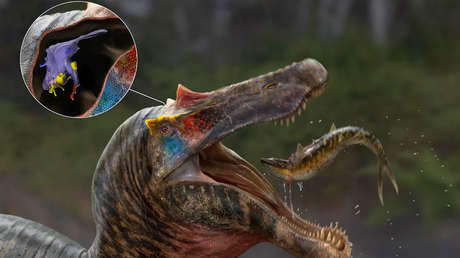Published:
26 Feb 2023 19:55 GMT
The skeletal structures of ‘Macronectes tinae’ consist of a well-preserved skull and an eroded humerus that were found by a fossil collector between 2017 and 2019.
A group of paleontologists from Norwegian and New Zealand scientific institutions reported the first evidence of an extinct giant petrel species, after discovering its remains in the sediments of the Tangahoe Formation, located on the southwest coast of the North Island (New Zealand), which it is known for harboring fossils of marine vertebrates dating from the late Pliocene.
In a study recently published in the journal Taxonomy, it was specified that the bone structures of the missing bird consist of a well-preserved skull and an eroded humerus (upper wing bone). Likewise, it was specified that both pieces were found between 2017 and 2019 by the fossil collector Alaistair Johnson.
The specialists explained that they decided to name the new species ‘Macronectes tinae’in tribute to Johnson’s late partner, Tina King, who at the time mentioned the giant petrel skull as her favorite fossil.
Its size does not live up to its name
Although this species was morphologically similar to its modern giant petrel counterparts, ‘Macronectes giganteus’ and ‘Macronectes halli’, the researchers assured that it was actually much smaller than these. This assumption was based on the obvious skeletal differences between the extinct bird and its living congeners, which are found throughout the southern hemisphere, from Antarctica to the subtropics.
However, paleontologist at the Norwegian Arctic University, Rodrigo Salvador, aforementioned this Saturday for LiveScience, commented that it is difficult to determine exactly how big it was ‘Macronectes tinae’due to the limited fossil samples they have.
The giant petrels of the genus ‘macronectes‘ They are more littoral birds than other petrels of the same family (‘procellariid‘), since they are the only species that can stand and walk on land, where they tend to be scavengers and predators, being their main source of food seal and penguin colonies. They also often hunt cephalopods and fish near the surface of the water, as well as feed on other seabirds.

In the case of the ‘Macronectes tinae’their nutritional needs were surely met by the fauna that inhabited the Tangahoe Formation, such as the monk seal ‘Eomonachus belegaerensis’, the penguin ‘Eudyptes atatu’, as well as the albatross ‘Aldiomedes angustirostri’ and two smaller species of petrels ( ‘Ardenna davealleni’ and ‘Procellaria altirostris’).
Finally, given the morphological similarities and the young age of the fossil (estimated between 3.36 and 3.06 million years), it was indicated that this now discovered species had an anatomy and habits generally similar to those of present-day giant petrels. . “‘M. tinae’ is the first pre-Quaternary fossil giant petrel ever reported.”stressed the scientists, concluding that the place where it was found is “an important piece of the puzzle to understand the evolution and biogeography of seabirds.”
If you liked it, share it with your friends!













